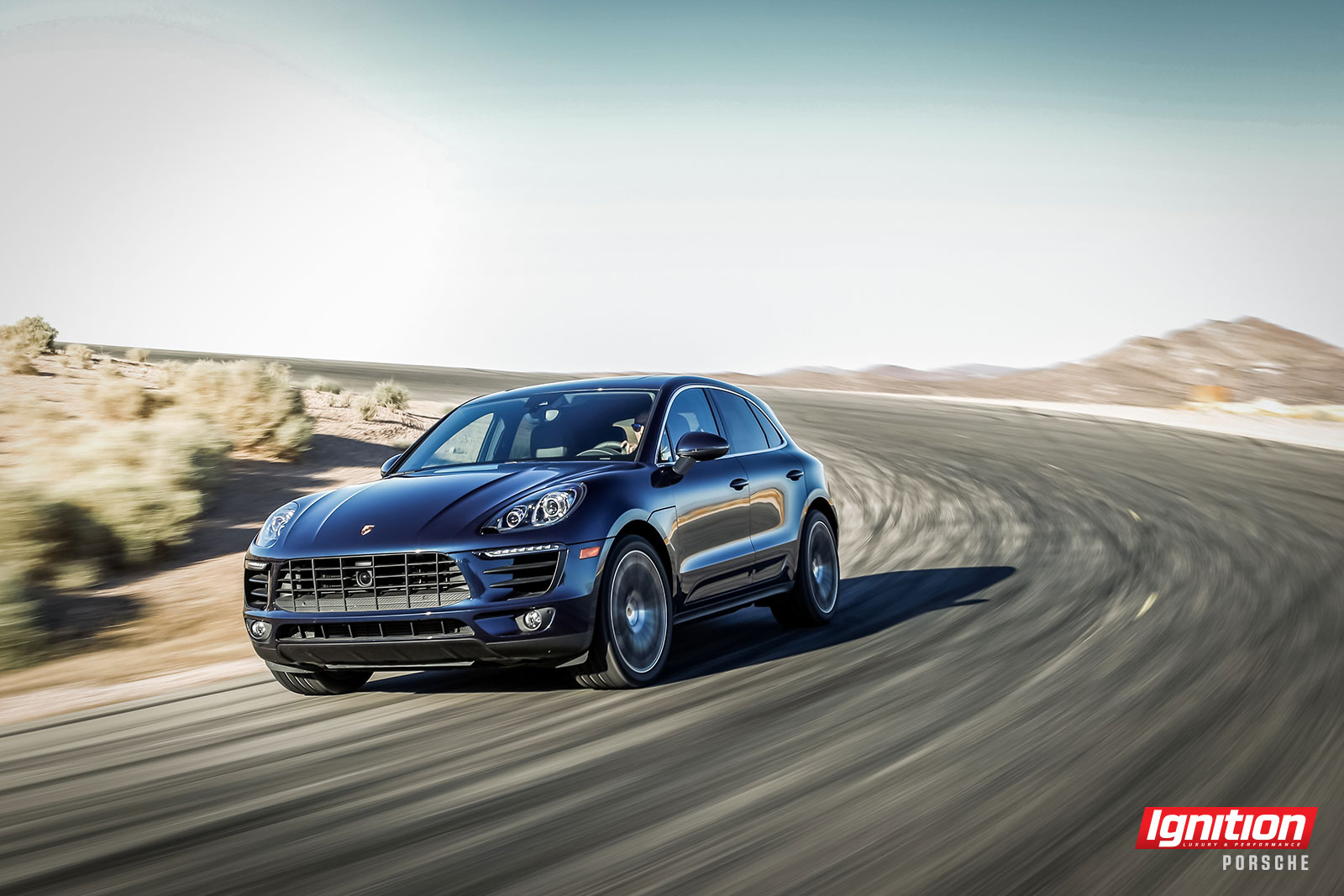
Porsche stepped onto new ground when it released the Macan. Said to be the ‘SUV that handles like a sports car,’ the smaller sibling to Porsche’s lone Cayenne SUV intended on bridging the gap between car and truck – not an easy task when you’re rated as highly as the Stuttgart manufacturer is.
From the outset, the Macan offers much of what you’d typically expect from a Porsche. It’s finely finished with great attention to detail. There are exterior elements that bare similarities to the Audi Q5 and Volkswagen Touareg (all of which share the same platform under the Volkswagen Group banner), but the rear of the Macan is tapered slightly for a more aggressive appearance to reflect Porsche’s sporting credo. The trim level does affect height capacity in the rear trunk, but not obviously. The front fascia is unabashedly Porsche, taking cues from the larger Cayenne (most similarly the new Turbo S), yet it does so in a way that makes the Macan feel like the younger, cooler sibling. The Turbo version takes a slightly more aggressive tone than the S in the large bumper, highlighted by a more intricate design in the side intakes with dual foglight fixtures, but both are fresh and befitting of an all-new Porsche.

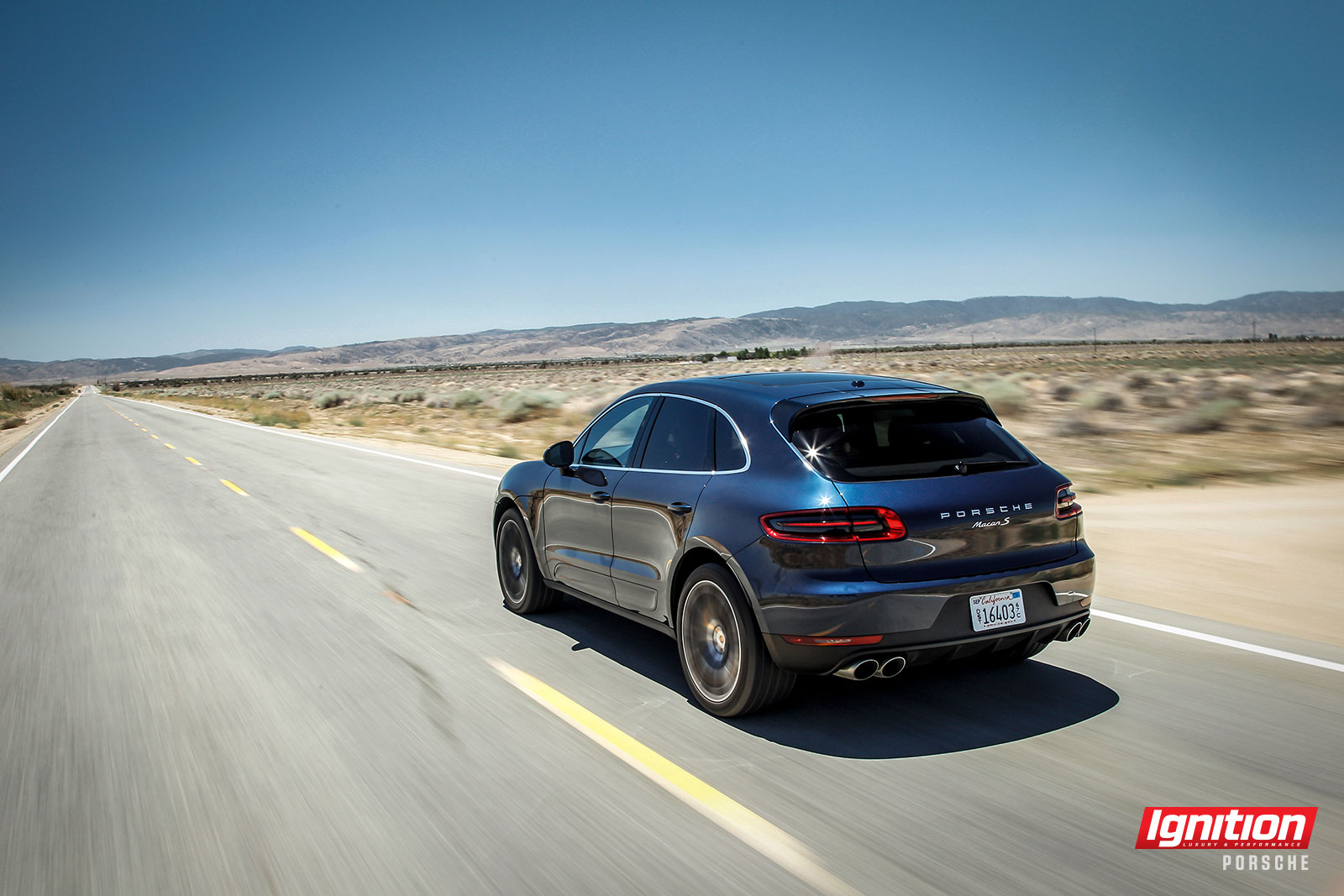
From a driving perspective, the Macan is sharp and smooth. If you’re expecting Porsche-like quickness, the 3.0-litre 340-horsepower twin-turbocharged engine on the S offers quite a bit of get-up-and-go, especially with the seven-speed PDK with manual mode that shifts quickly and definitively. Porsche’s PDK has been ranted and raved to death, and here it is no different. During the majority of my time with the Macan, I keep it in manual mode, simply because of the joy of engagement it brings. It doesn’t hurt that the shapely and sturdy metal paddle shifters look and feel like art, giving a responsive shift at every pull.
From a standstill, the Macan S will rocket to 100 km/h in just 5.4 seconds and, when equipped with the Sport Chrono package that I’m driving, it shaves another two-tenths off that. Should you opt for the 3.6-litre, 400-horsepower Turbo model, acceleration drops again to just 4.8 seconds (4.6 with the Chrono pack). Pair that with a top speed of 254 km/h and an established all-wheel-drive system, and Porsche is right: this is entering into sports car territory.
Throttle response is responsive in Sport Plus mode in both Macan S and Turbo, but it really hits its sweet spot in the 3,000 to 5,500 rpm range where you get an ever-so-slight kick from the turbocharger. I was hoping for quicker pickup at speed in the top driving mode, but I remind myself that I’m driving a 1,900-kilogram SUV, and not a 1,500-kilo Carrera. Fuel consumption in the S averages 13.1 L/100 km in predominantly Toronto city driving. For this, I can’t make a single complaint.
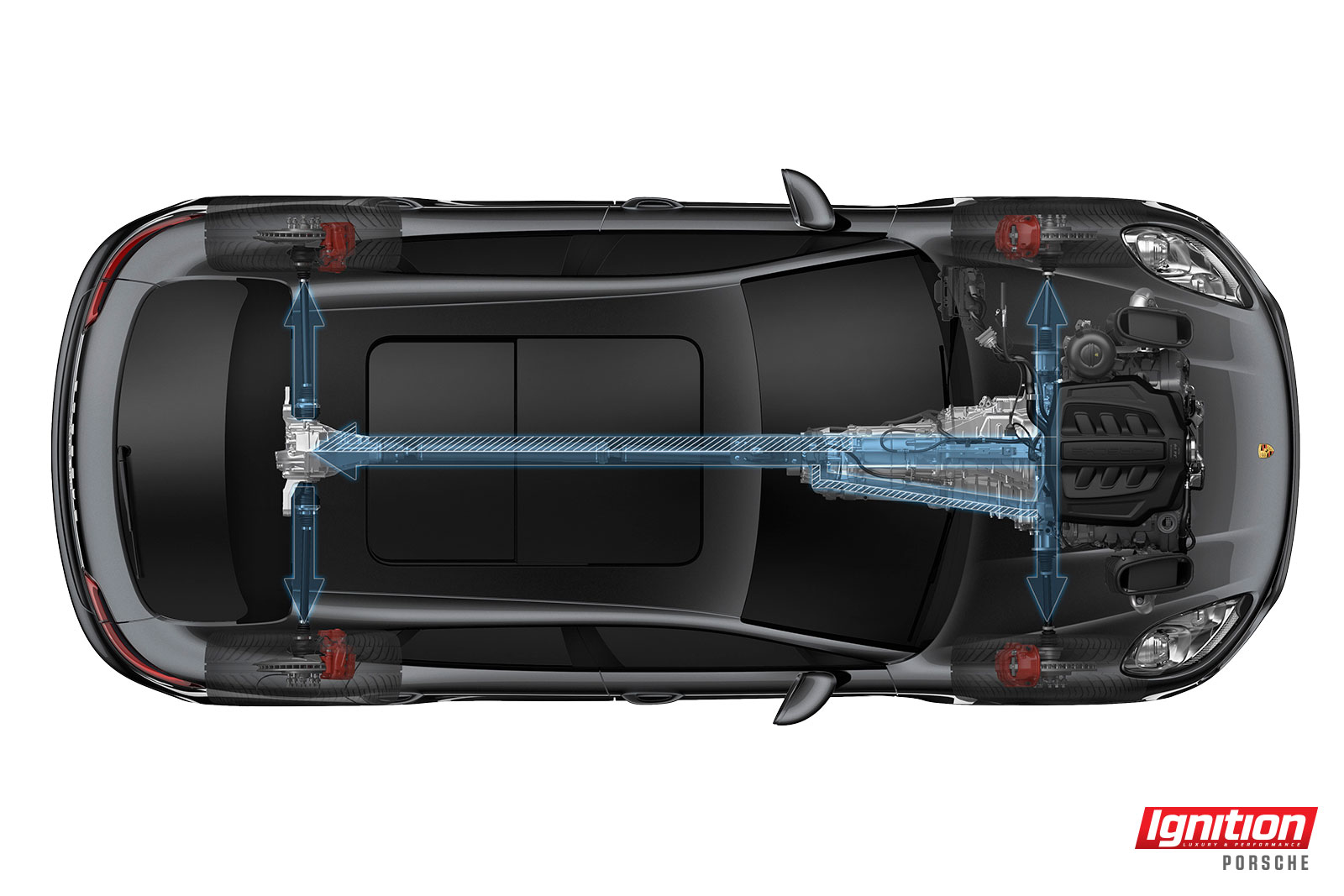 The Macan is offered with two styles of suspension: the standard coilover that also comes in a sport option, and a ride-height adjustable air suspension. Both play different parts to different drivers wants and needs, so buyer be warned: choose wisely. In Sport Plus mode and in the lowest ride height setting, the air suspension is considerably softer than the coilover. While the difference isn’t as noticeable to co-drivers and passengers, to the discerning driver and those looking for a truer, responsive sport drive, the coilovers are, in my opinion, the better option. Those wanting more comfort, style or off-road ground clearance (up to 230 mm) may consider the air setup instead.
The Macan is offered with two styles of suspension: the standard coilover that also comes in a sport option, and a ride-height adjustable air suspension. Both play different parts to different drivers wants and needs, so buyer be warned: choose wisely. In Sport Plus mode and in the lowest ride height setting, the air suspension is considerably softer than the coilover. While the difference isn’t as noticeable to co-drivers and passengers, to the discerning driver and those looking for a truer, responsive sport drive, the coilovers are, in my opinion, the better option. Those wanting more comfort, style or off-road ground clearance (up to 230 mm) may consider the air setup instead.
With the coilover setup in the tester, steering wheel response is quite good; slightly tighter than the Q5 but not nearly as stiff as BMW’s X4. As is not the case with many electronically-assisted steering setups nowadays, the Macan still delivers a good deal of road feedback through the steering wheel which, from an instrumental and aesthetics point of view, is a beautiful centrepiece in the interior. Perhaps it has to do with being modeled after the version in the flagship 918.
Ease of use of the infotainment system extends outward from the logical steering controls (where changes are displayed on the driver’s instrument cluster), to the touchscreen or button-controlled head unit. Lining each side of the gear selector are simple climate controls, driving mode and driving assist buttons (if optioned) that include steering and suspension settings, off-road mode, blind spot indicators, lane-keep assist and more, all toggled with a simple on/off click.
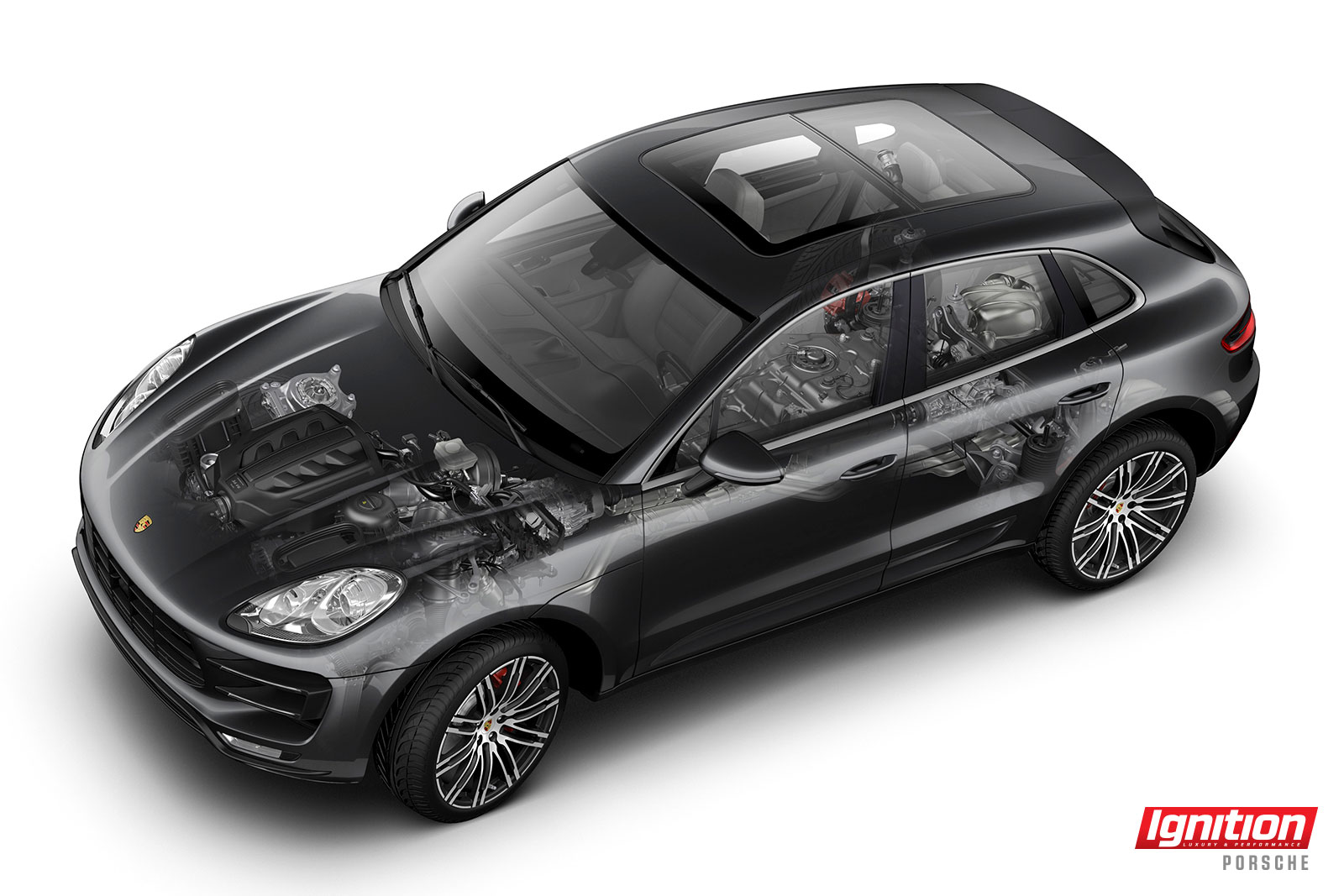
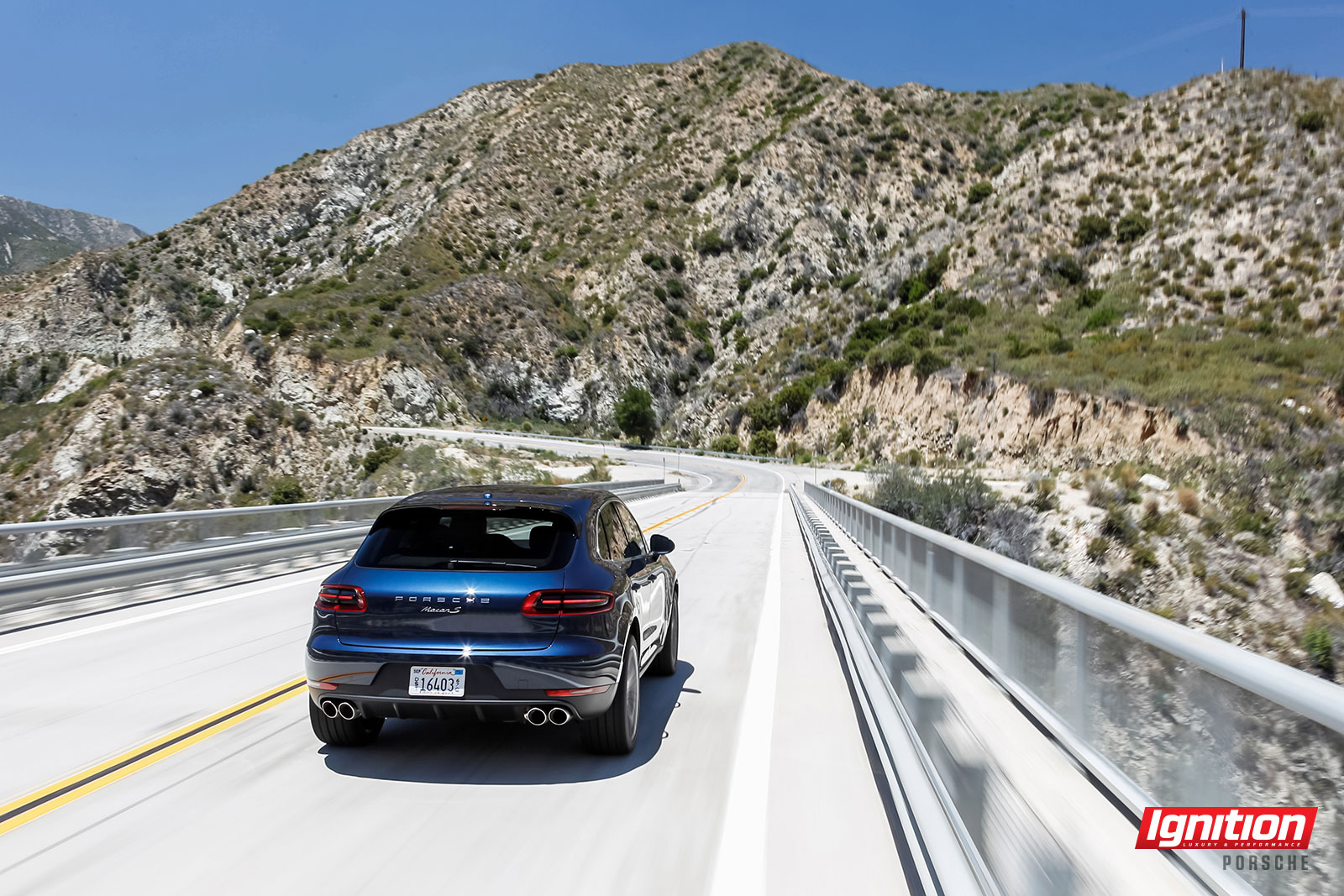
The standard finishes on the Macan S include Alcantara-insert eight-way seats offering excellent comfort and stability (buyers can also opt for a 14-way option or 18-way sport seats (standard on the Turbo)), and the mix of high-quality leather and aluminum finishes give a truly high-quality feel. The dual-zone climate control and 11-speaker, 235-watt crystal clear Bluetooth sound system (Bose or Burmester optional) creates an environment befitting of a modern yet utilitarian Porsche, and adding options such as carbon or wood trim and embossed leather seats only add to its persona.
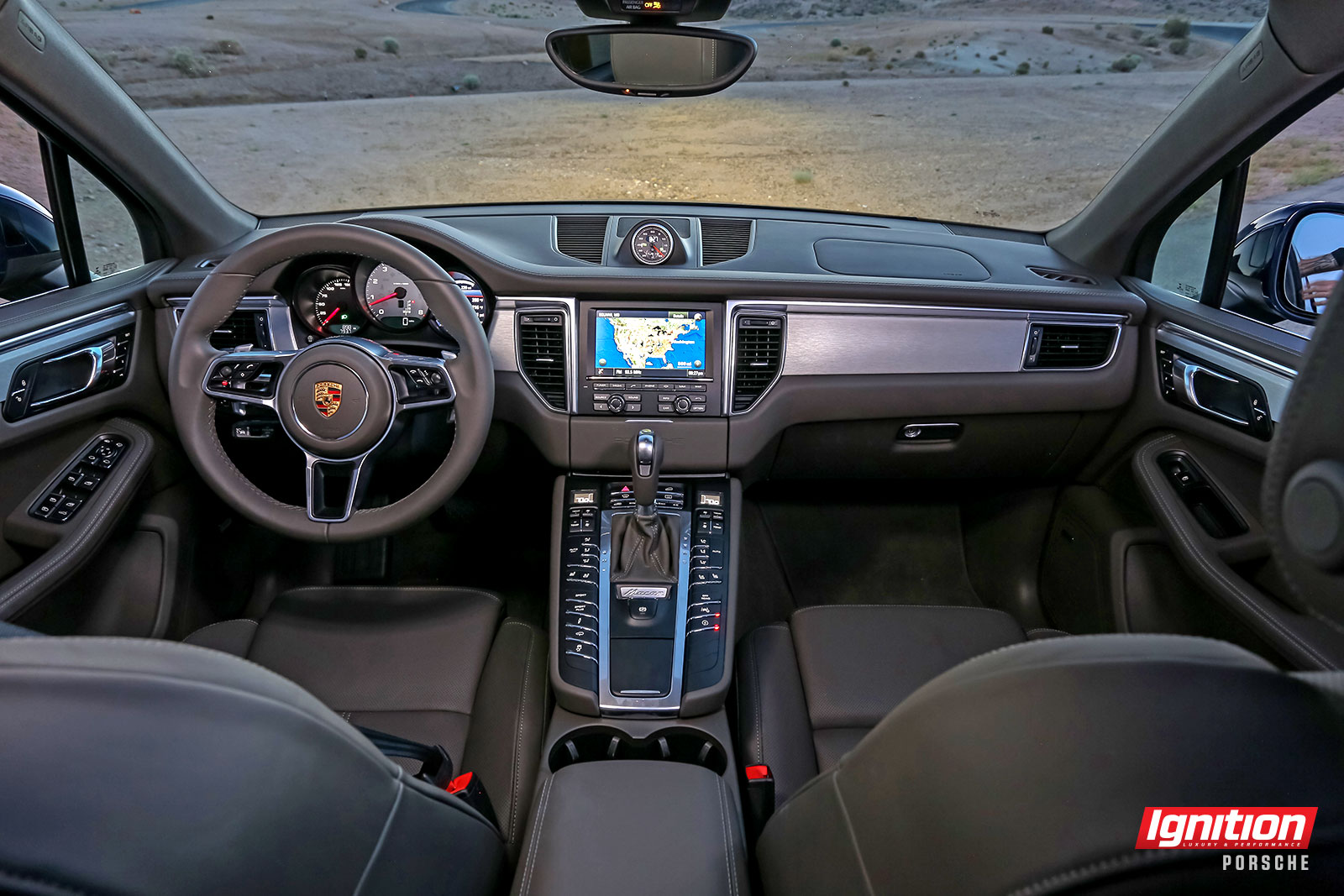 One noticeable difference compared to the Macan’s Q5 cousin is that it feels like it’s on the smaller side of interior spaciousness, though this is by no means a bad thing. Undoubtedly, this is magnified by the smaller moonroof size than the Q5, which makes the Macan feel slightly more enclosed. But this feels much more like a driver-oriented vehicle. In fact, the smaller impression translates into the Macan not feeling as big or as wide as the Audi. It’s very easy to get used to. The A-pillars are positioned nicely, with small A-pillar windows ahead of the side mirrors for added visibility. All around, visuals out of the Macan are clear and unobstructed. Opting for the safety package with blind-spot indicators would just be icing on the cake.
One noticeable difference compared to the Macan’s Q5 cousin is that it feels like it’s on the smaller side of interior spaciousness, though this is by no means a bad thing. Undoubtedly, this is magnified by the smaller moonroof size than the Q5, which makes the Macan feel slightly more enclosed. But this feels much more like a driver-oriented vehicle. In fact, the smaller impression translates into the Macan not feeling as big or as wide as the Audi. It’s very easy to get used to. The A-pillars are positioned nicely, with small A-pillar windows ahead of the side mirrors for added visibility. All around, visuals out of the Macan are clear and unobstructed. Opting for the safety package with blind-spot indicators would just be icing on the cake.
The Macan S enters the market at an excellent starting point. It’s customizable five ways from Sunday and, although checking off the options list can raise the price rapidly and exponentially, what you’re getting is a customized vehicle with performance that is hard to ignore (let alone for an SUV), and one that carries the cache of Porsche tradition along with its years of all-wheel drivetrain and chassis development. It’s arguably the company’s biggest launch in years next to the 918 Spyder and, after extensive time behind this and its major competitors, I’d be hard pressed not to say the Macan is the best-handling, best-performing mid-size SUV on the market today.
ESSENTIALS
2015 Porsche Macan S
Base Price: $54,300
Price as tested: $64,085
Engine: 3.0L twin-turbo V6
Horsepower: 340 hp @ 5,000-6,500 rpm
Torque: 339 lb-ft @ 1,450-5,000 rpm
Dry Weight: 1,865 kg
Configuration: FA
Transmission: 7-speed DCT PDK
Fuel Economy Ratings L/100 km (city / hwy.): 13.7 / 10.3 (13.1 observed)
Warranty (mos. / km): 48 / 80,000
By the Numbers
$159.7/hp (base MSRP)
113.3 hp/L (engine displacement)
182 hp/ton (horsepower to weight)
13.1 L/100 km (DCT – observed)
Options on test vehicle: Agate Grey Metallic paint ($790); Panoramic Roof System ($1,910); Park Assist Front and Rear ($1,110); 19-inch Macan Turbo Wheels ($1,440); Infotainment Package ($3,420); Standard Interior Black ($0); No Roof Rails ($0); Active All-Wheel-Drive ($0); Porsche Intelligent Performance ($0).






















